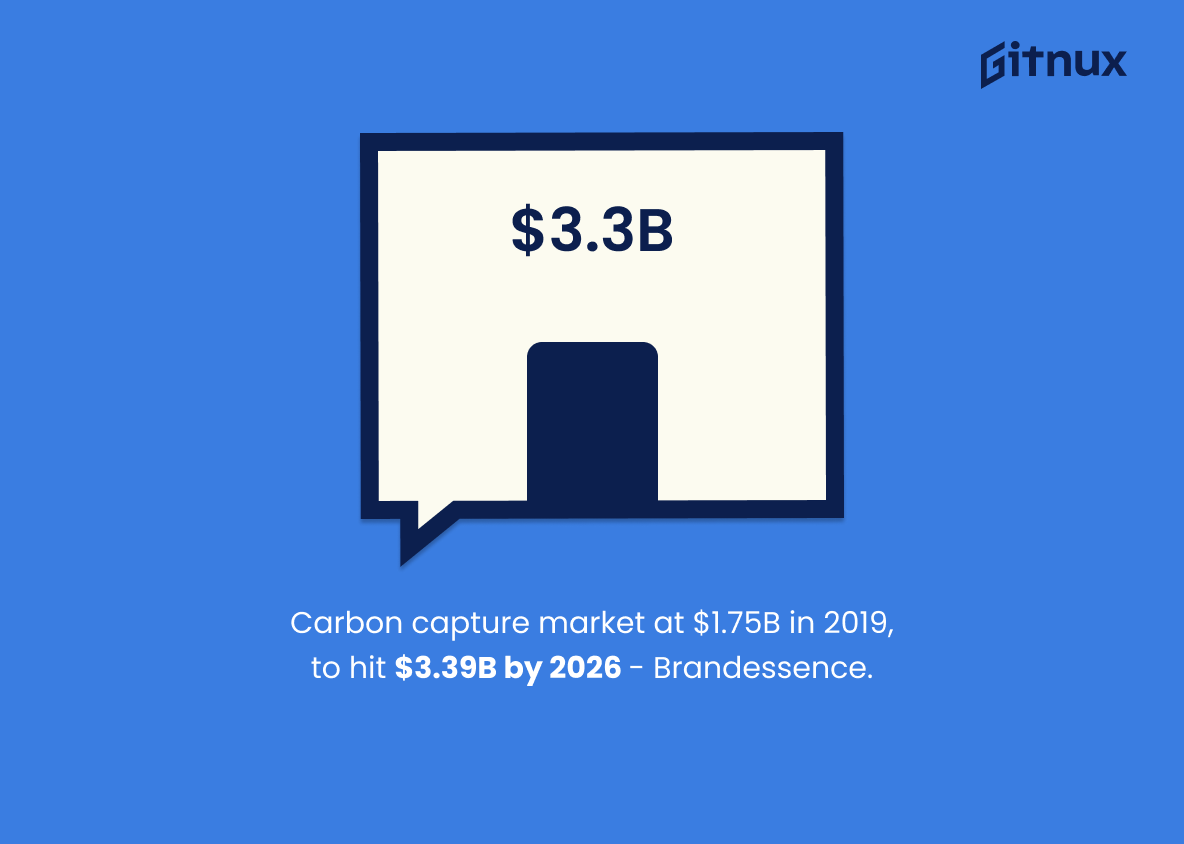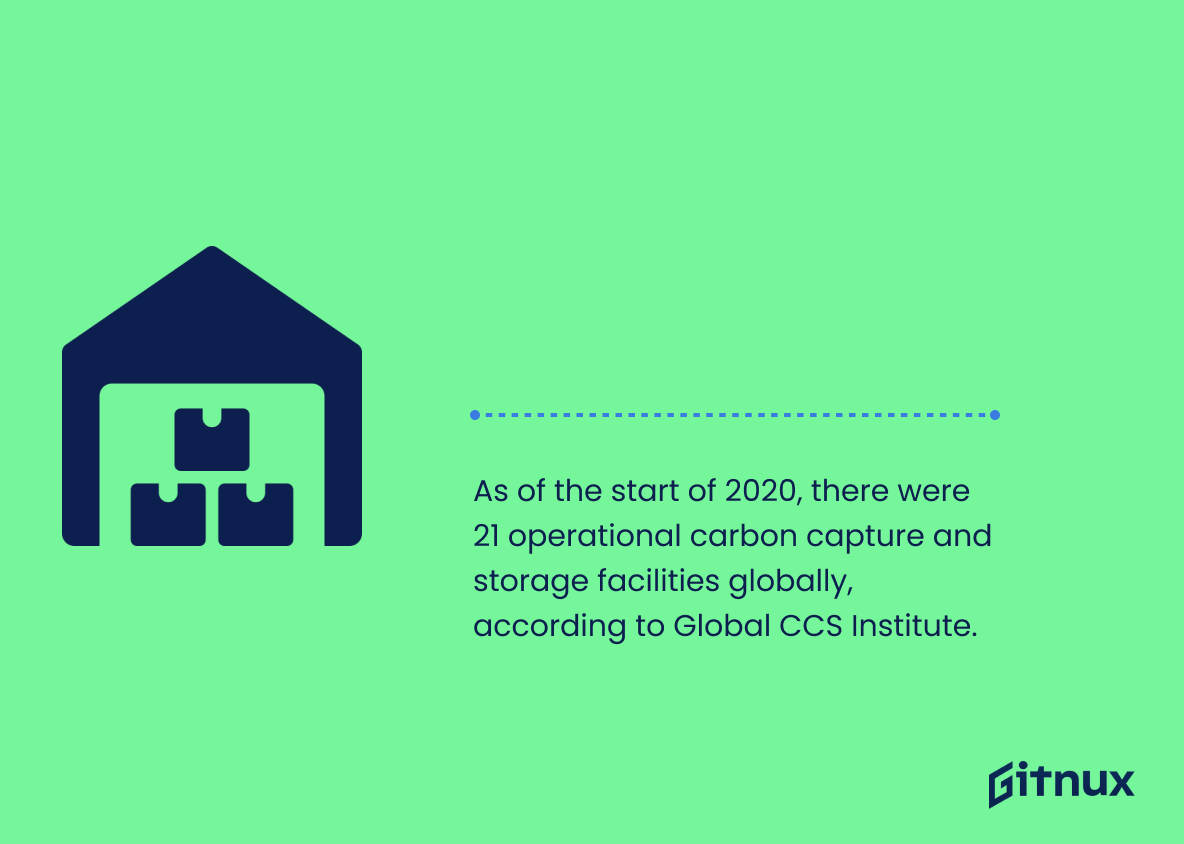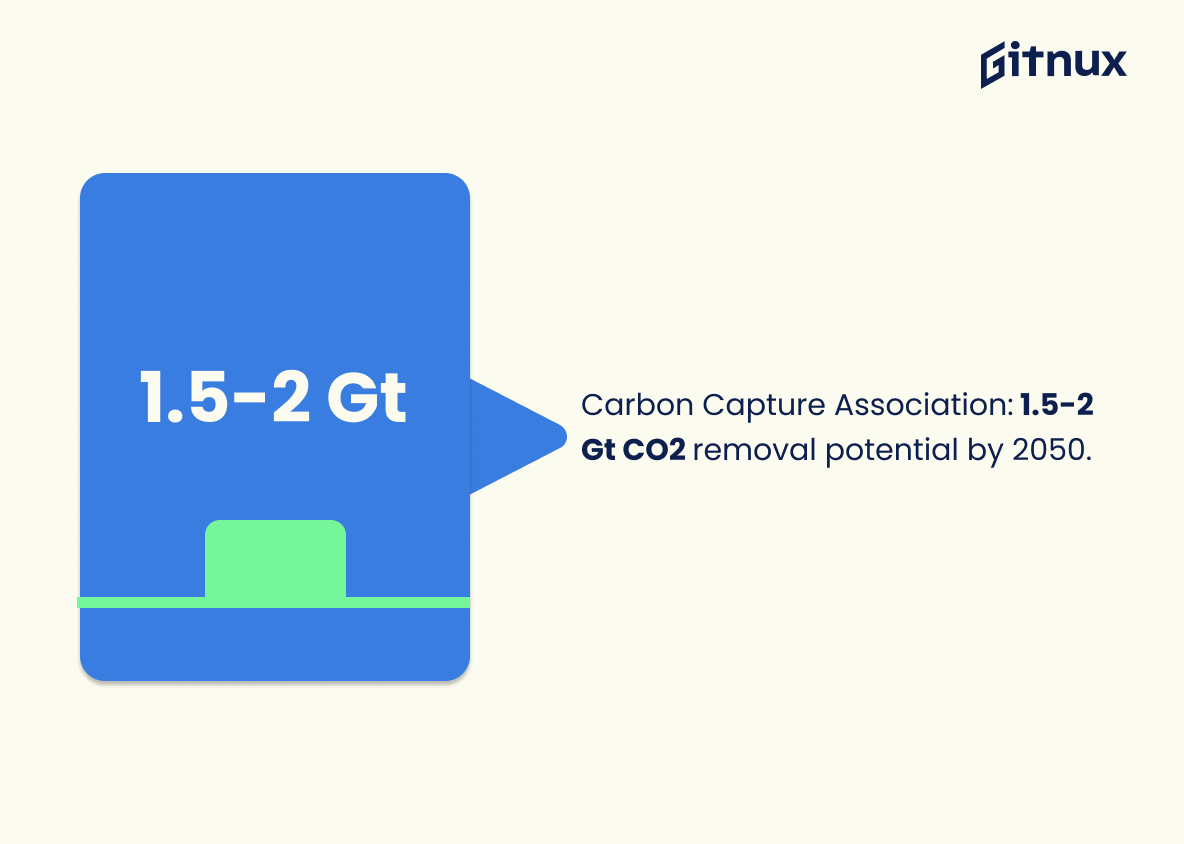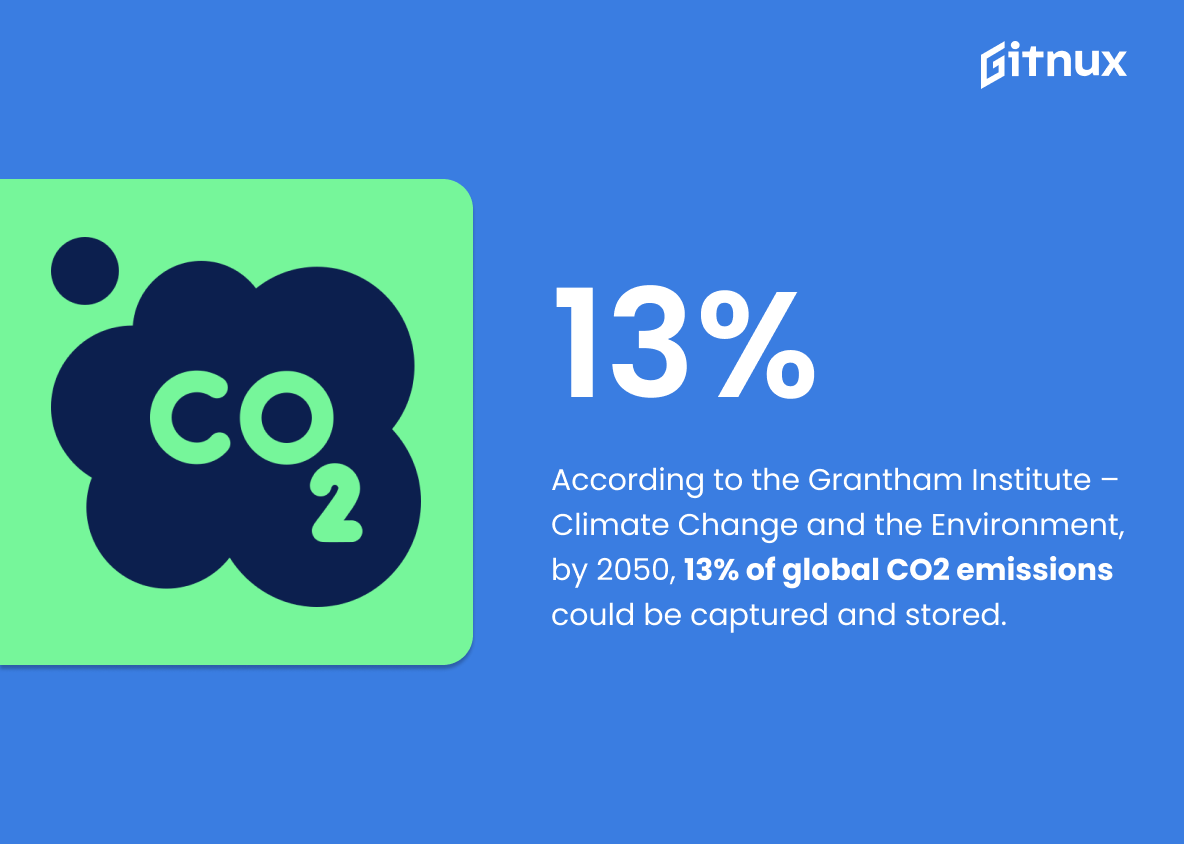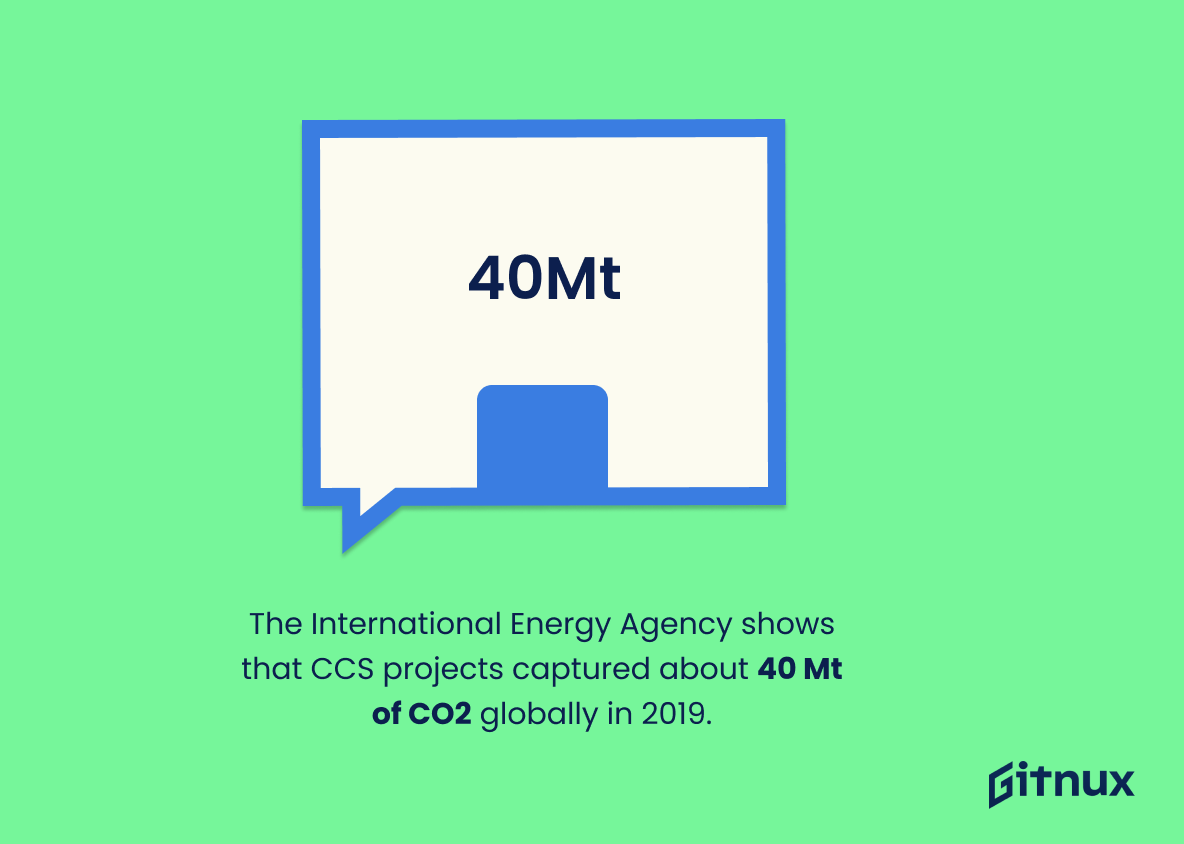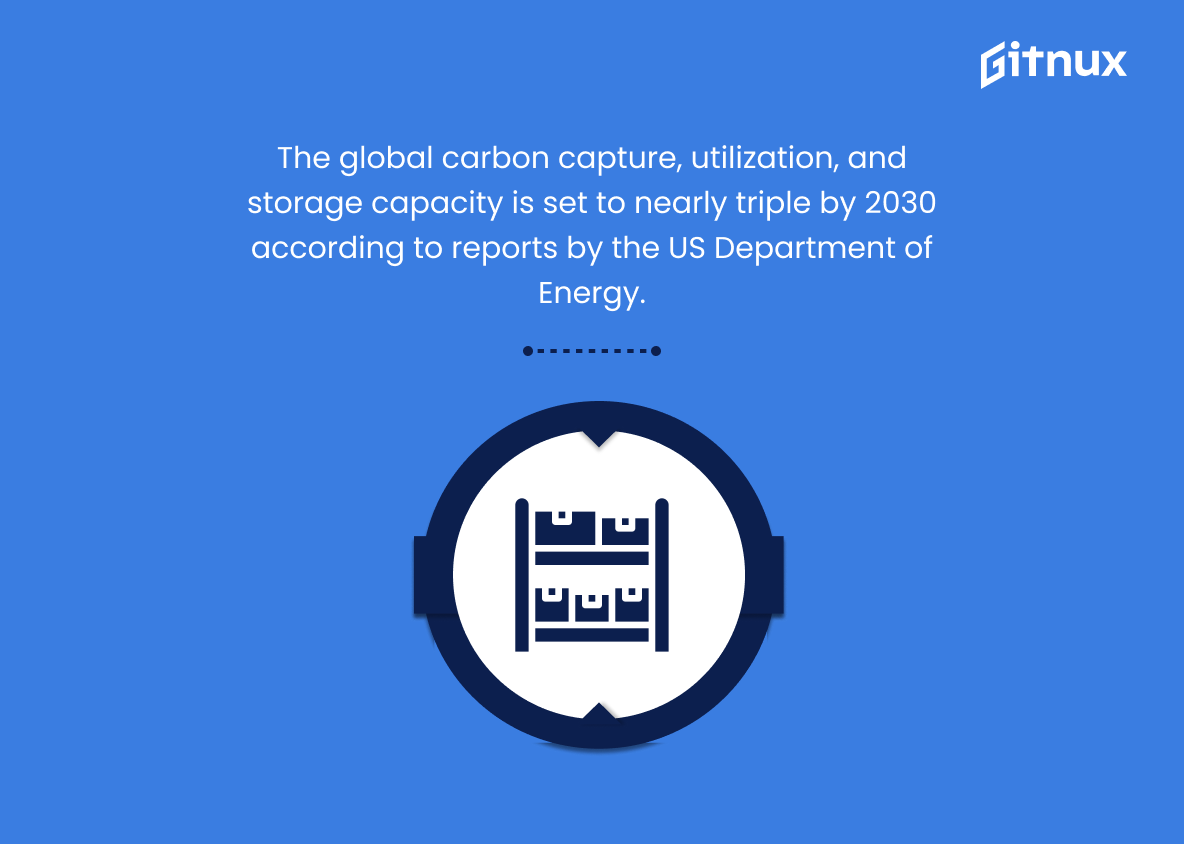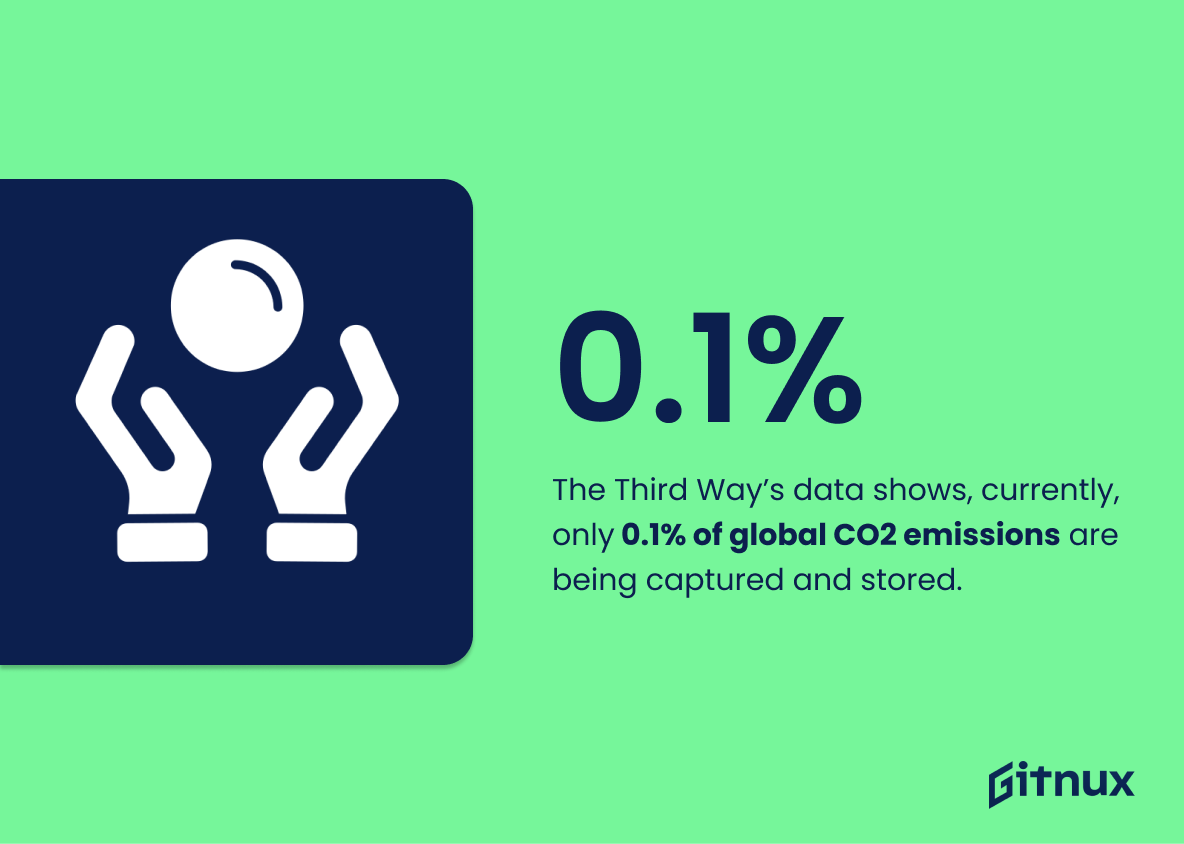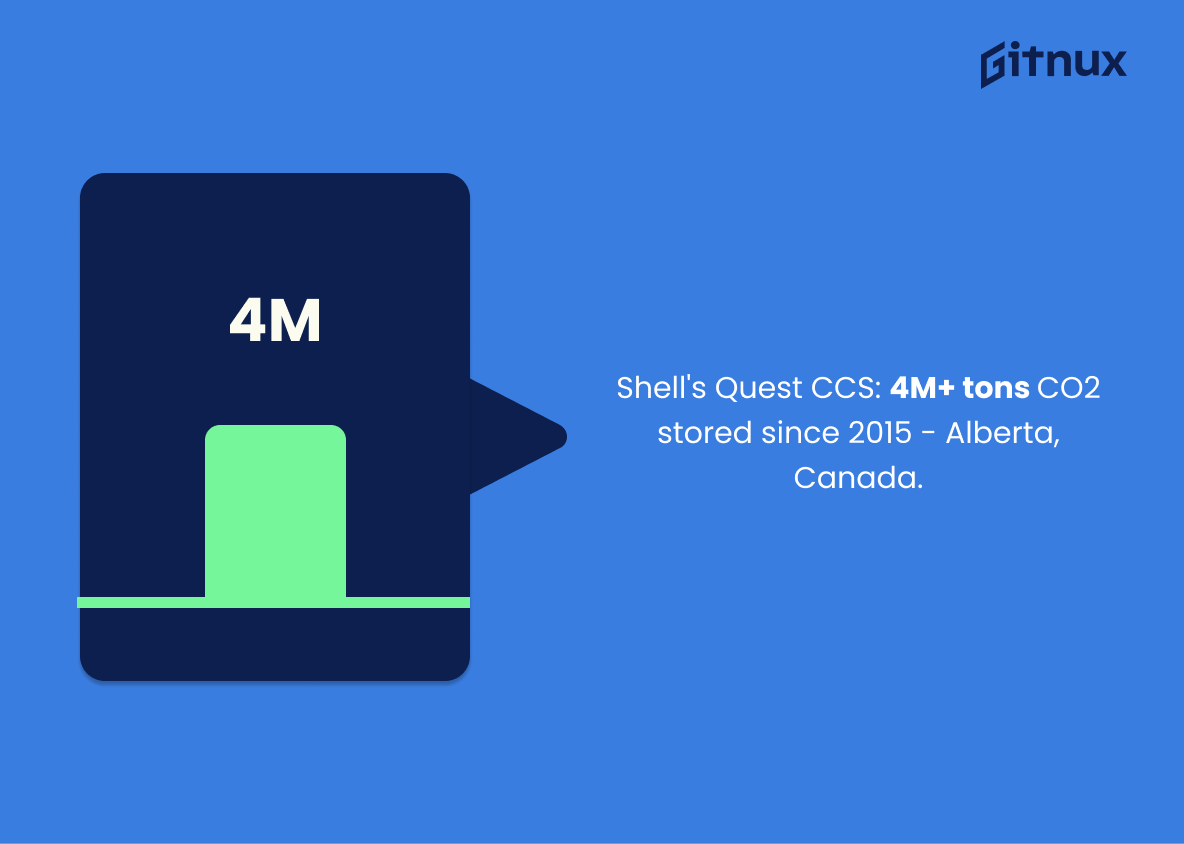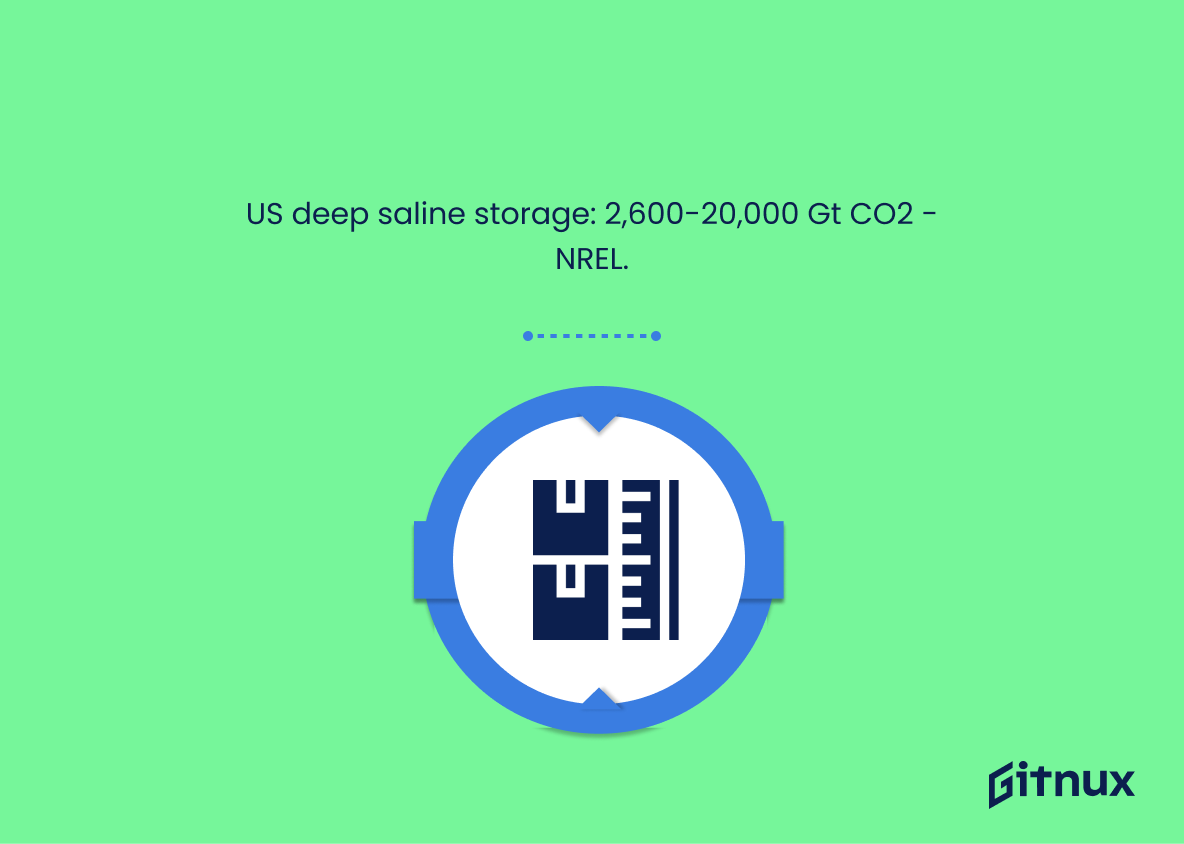In an era where sustainable practices and environmental conservation are becoming increasingly significant, the Carbon Capture industry is growing exponentially. The potential this technology holds to combat climate change is remarkable, offering a lifeline in our quest to reduce global carbon emissions. In this blog post, we will peel back the layers of this dynamic industry, providing you with the most recent statistics and shedding light on the deeply-rooted significance the Carbon Capture industry has in our race to achieve a healthier and greener planet. Prepare to dive into a world where science meets sustainability, and discover how the numbers tell a story of innovation, growth and hope for our shared future.
The Latest Carbon Capture Industry Statistics Unveiled
The carbon capture and storage market size is projected to grow from $2.4 billion in 2020 to $7.7 billion by 2025, according to a report by Markets and Markets.
Highlighting this forecasted growth in the carbon capture and storage market serves to underscore the dynamic momentum this industry is experiencing. Projected to more than triple in size within a five-year span, the statistic reflects robust market confidence and technological advancements, as well as global urgency to combat climate change. Incorporating this figure not only paints a vivid picture of the industry’s financial viability and impressive potential return on investment, but also conveys the increasing global commitment towards sustainable practices and technologies. In a broader sense, this milestone signifies the intersection of fiscal opportunity with environmental responsibility, a narrative that is becoming increasingly relevant in our modern economy.
The carbon capture utilization & storage market was valued at $1.75 billion in 2019 and is expected to reach $3.39 billion by the end of 2026, according to reports from Brandessence Market Research.
Peering into the figures at hand, it’s almost as if witnessing a daring cliffhanger movie. The carbon capture utilization & storage market, with its $1.75 billion valuation in 2019, sits ready on the edge, gearing up to almost double its value to $3.39 billion come end 2026, as reported by Brandessence Market Research. This daring leap not only signals the palpable acceleration and expanding financial stakes in this field, but also underscores a crescendo of market confidence pulsating through the veins of this burgeoning industry. Clearly, these figures serve as a financial heartbeat echoing the importance and potential of the carbon capture industry. They command attention, unmasking an intriguing narrative of remarkable growth and the unfolding story of how this sector is becoming a heavyweight in the quest for more sustainable industrial practices.
As of the start of 2020, there were 21 operational carbon capture and storage facilities globally, according to Global CCS Institute.
As we survey the landscape of the carbon capture industry, this intriguing figure captures our attention – the dawn of 2020 introduced us to no less than 21 globally operational carbon capture and storage facilities, as confirmed by Global CCS Institute. This number not only is a testament to the vigour in this burgeoning industry, but portrays a powerful narrative about our concerted fight against global warming. It showcases our efforts, as a global community, to harness advanced science for trapping and storing carbon emissions. Furthermore, it underscores the potential growth and investment prospects in this industry, forming a cornerstone of our discussion about carbon capture industry statistics.
According to the Carbon Capture and Storage Association, there’s between 1.5 to 2 Gigatons (Gt) of CO2 removal potential by 2050 for carbon capture and storage.
Unraveling the implications of the compelling statistic laid out by the Carbon Capture and Storage Association, we realize its pivotal role in the landscape of carbon capture industry statistics. A staggering 1.5 to 2 Gigatons (Gt) of CO2 are predicted to be eliminated by 2050 through carbon capture and storage. This not only underlines the monumental feasibility of carbon capture technologies but also sheds light on their far-reaching potential in influencing future scenarios of climate change. Anchoring the blog post on this data, we stress on the transformative role the carbon capture industry can play in mitigating global warming and proliferating into a sustainable future.
The global carbon capture and sequestration market will exceed $9.9 billion by 2027 according to FMI’s study.
Reflecting upon the striking projection from FMI’s study that the global carbon capture and sequestration market will rocket past the $9.9 billion mark by 2027, crystallizes the magnitude and dynamism of this industry. It paints a compelling canvas of the remarkable financial strides this sector is expected to make within less than a decade, underpinning its increasing relevance and profitability.
More so, it tells a potent tale of scale, revealing the expanding economic footprint of an industry tackling climate change and providing pivotal sustainable solutions. The projection tacitly highlights the surge in investment and technological advancement, whilst emphasizing the booming demand and the mainstream recognition of the carbon capture technologies.
Moreover, it unquestionably sets the expectations high for stakeholders, painting a vibrant picture of a bountiful future. In essence, the upcoming half-decade will witness a strong market transformation, validating the carbon capture industry’s untapped potential and its pivotal role in our low-carbon economy transition.
According to the Grantham Institute – Climate Change and the Environment, by 2050, 13% of global CO2 emissions could be captured and stored.
Highlighting this striking projection from the Grantham Institute – Climate Change and the Environment, paves the way in stressing the transformative potential of the carbon capture industry. Imagine a world where, by mid-century, as much as 13% of global CO2 emissions no longer escalate our climate crisis, but instead, are taken hostage and stored away. For readers digesting carbon capture industry statistics, this serves as a beacon of hope, a testament to the significant role that this industry could play in global carbon reduction strategies. It reflects the gains we stand to make in the battle against climate change, by increasingly leveraging carbon capture technology. Hence, it is not merely a statistical figure; it’s a peek into a possible future, a future where the carbon capture industry stands as a crucial pillar supporting our environmental sustainability architecture.
The International Energy Agency shows that CCS projects captured about 40 Mt of CO2 globally in 2019.
Illuminating a significant pivot in the path towards a cleaner future, the International Energy Agency’s data clearly highlights the tangible, impactful results produced by CCS projects in 2019. The impressive figure of around 40 Mt of CO2 captured globally indeed underscores the imminent role of carbon capture technology as a linchpin in our battle against climate change. This important figure not only provides a yardstick of the industry’s current prowess but also signals its potential impact on the larger environmental context, truly a beacon of optimism for those invested in the environmental future of our planet.
North America has the largest carbon capture capacity, capturing over 80% of the global total, according to a report by Think Geoenergy.
Sailing forth as the behemoth in the realm of carbon capture, North America’s impressive contribution – over 80% of the global total – wields considerable significance within the world canvas of Carbon Capture Industry Statistics. Such a number, as reported by Think Geoenergy, not only speaks to the continent’s advanced technological capabilities, but also underscores an urgent commitment to environmental sustainability. In a rapidly changing global climate scenario where reductions in greenhouse gas emissions are more crucial than ever, this statistic serves as a shining beacon, a yardstick by which other nations can gauge their own efforts and contributions. Furthermore, this data thread illuminates in-depth the sectoral investment, policy support, and innovation forefront in the North American context, essentially shaping the blueprint of the carbon capture and storage (CCS) landscape. Therefore, pivoting focus onto this statistic, we may weave a captivating narrative around the potentials, challenges, and explorations characterizing the North American segment of the carbon capture industry.
The carbon capture and storage market in the Asia Pacific is anticipated to grow at a 15.6% CAGR from 2020-2027 according to Orion Market Reports.
Painting the panorama of the Carbon Capture Industry in the Asia Pacific, the pulsating prediction from Orion Market Reports bids the growth potential of 15.6% CAGR from 2020-2027. A revelation indeed, pulling back the curtains on the expansive market dynamics that could stimulate a torrent of opportunities in the carbon capture and storage sector. This, in essence, spotlights the Asia Pacific as a rising powerhouse, a fertile battleground charged with transformative energies and innovations, echoing the promising dawn of a cleaner and sustainable future.
The global carbon capture, utilization, and storage capacity is set to nearly triple by 2030 according to reports by the US Department of Energy.
Showcasing a perspective on the dynamism of the Carbon Capture Industry, the US Department of Energy’s prediction that the global carbon capture, utilization, and storage capacity is on track to almost triple by 2030, serves as a beacon of the industry’s potential growth. As a key cornerstone in battling climate change, this expected growth in capacity could be instrumental in reducing atmospheric carbon dioxide levels, thereby limiting global warming.
From a purely industrial standpoint, the tripling of capacity suggests a rising demand for carbon capture solutions, ushering in opportunities for new entrants, increased investments, advancements in technology, and more job creation. Armed with this statistic, industry stakeholders can strategize and plan barriers in the ever-evolving landscape of the carbon capture industry. So, it’s not just a number, but a compass indicating where the wind is blowing in the realm of carbon capture, utilization, and storage.
The Third Way’s data shows, currently, only 0.1% of global CO2 emissions are being captured and stored.
Unwrapping the statistic about a mere 0.1% of global CO2 emissions being captured and stored offers a sobering benchmark for the scale of the challenge standing before the Carbon Capture Industry. This microscopic percentage simultaneously highlights the monumental potential the industry possesses to propel us towards more sustainable futures and signifies how far we have to travel to achieve widespread, effective carbon capture and storage. In essence, this number serves as both the grain of salt hinting at the lengthy road ahead and the key catalyzing awareness and spurring advancements in this vitally important sector.
Bioenergy with Carbon Capture and Storage (BECCS) could offer a negative emissions potential of up to 10 gigatons of CO2 per year by 2050, according to the International Energy Agency.
Painting the portrait of the Carbon Capture Industry with data, the International Energy Agency provides an umbrella view of the great strides being taken in the field of carbon sequestration. Their astonishing prediction speaks exclusively to the capabilities of Bioenergy with Carbon Capture and Storage (BECCS) which, if left unchecked, could result in a negative emissions potential of approximately 10 gigatons of CO2 annually by 2050. This deeply entrenched figure shines a spotlight on the transformative power of BECCS in reversing the damaging impact of CO2 emissions. Equal parts warning and revelation, this statistic mirrors the urgency of timely action in the Carbon Capture Sector and illuminates its pivotal role in our collective pursuit of a carbon-neutral future.
According to BusinessWire, Occidental, a leading American company in carbon capture, aims to sequester 800,000 tons of CO2 annually.
Delving into the depth of this data, one uncovers the ambitious commitment of Occidental, a prominent player in the American carbon capture industry. This endeavor to sequester a staggering 800,000 tons of CO2 annually is a remarkable indicator of how seriously companies are considering their carbon footprints, thereby striking a chord of paramount importance in the symphony of Carbon Capture Industry Statistics. Such a demonstration of dedication not only amplifies the urgency but also underscores the ongoing advancements and potentials in the industry.
In Alberta, Canada, the Shell’s Quest carbon capture and storage facility has sequestered over four million tons of CO2 since starting operations in 2015.
Tapping into the rich vein of carbon capture industry statistics, one cannot simply overlook the gripping narrative marked by Shell’s Quest carbon capture and storage facility in Alberta, Canada. A theatrical illustration of success, the facility has eclipsed the significant milestone of sequestering over four million tons of CO2, an achievement to its standing since opening its doors in 2015. This highlights the instrumental role of practical and efficacious implementations of carbon capture technology by industry heavyweights in the relentless battle against escalating CO2 levels. Furthermore, such noteworthy accomplishments tend to act as a guiding light, carving a path towards a more sustainable future and a roadmap for burgeoning facilities around the globe. No longer can the skeptics dismiss carbon capture as a quixotic pursuit, not when we have substantial proof of its viability and effectiveness right in the heart of Canada.
According to the National Renewable Energy Laboratory (NREL), the potential CO2 storage capacity in the United States for deep saline formations alone ranges from about 2,600 to 20,000 gigatons.
Revel in the knowledge that, as stated by the National Renewable Energy Laboratory (NREL), the United States possesses an immense buffer against CO2 pollution, with deep saline formations alone boasting a potential CO2 storage capacity ranging from 2,600 to 20,000 gigatons. This bounteous potential to store captured carbon beckons promising prospects for the Carbon Capture Industry. Indeed, it unearths how vast our capabilities are in mitigating carbon footprints and provides a compelling argument for increasing our efforts, investments, and policy support in technologies and strategies that allow us to harness this potential to the fullest. With these figures at the forefront, our outlook on the fight against climate change shifts from despair to opportunity, pushing us to view our future through a hopeful lens.
By 2060, the clean hydrogen production by carbon capture will contribute 450 Mt CO2 capture, according to Clean Hydrogen report by Wood Mackenzie.
Highlighting the projection by the Clean Hydrogen report by Wood Mackenzie provides a compelling glimpse into the future of the carbon capture industry. The estimated 450 Mt CO2 capture slated for 2060 underlines the industry’s significant potential for growth and innovation, especially in the context of clean hydrogen production. It also emphasizes the substantial role the carbon capture industry is set to play in mitigating greenhouse gas emissions, encapsulating the urgency of transitioning towards low carbon technologies amidst a climate crisis. This, therefore, stands as a testament to the industry’s capacity in promoting sustainable progress and its relevance in shaping energy policies globally.
The carbon capture technologies contributed to around 30 Mt CO2 emissions reduction in the United States in 2019, according to the Global CCS Institute.
Highlighting the fact that carbon capture technologies have contributed to reducing CO2 emissions by approximately 30 Mt in the United States in 2019 greatly emphasizes the significance of this technology in combating global climate change. In the context of a blog post about Carbon Capture Industry Statistics, this figure provides a tangible measure of the impact of carbon capture on mitigating the adverse effects of greenhouse gases. Moreover, it underscores the vital role of such technologies, instilling awareness of their importance and potentially driving further investment and research in this field. Therefore, folding this statistic into the heart of the debate paints a powerful picture of the relevancy and potency of the carbon capture industry.
The International Energy Agency suggests carbon capture and storage could contribute to reducing global CO2 emissions by 19% by 2050.
Peering through the lens of Carbon Capture Industry Statistics, one can’t help but illuminate the projection by the International Energy Agency. An astounding reduction of global CO2 emissions by 19% by 2050, thanks to carbon capture and storage, emerges as a silver lining in the fight against climate change. This pivotal figure not only signifies the potential boom and transformative role of the industry but also underscores the vital contribution it can make towards decelerating global warming’s trajectory. This prophecy of mitigation imparts a sense of urgency and momentum for innovations within this sector, thus, making this statistic a crucial rallying point for both business leaders and environmental activists alike.
Conclusion
To sum up, the Carbon Capture Industry is undeniably becoming a significant player in the global efforts towards a more sustainable and green future. Statistical trends indicate its growth is not just consistent but remarkably accelerating, a clear sign of its relevance and need within our society. However, with the demands of climate change knocking at our doors, further improvements, innovations, and investments are still needed. As we move forward, the continuous analysis and understanding of these industry statistics can play a vital role in crafting the necessary policies and strategies to ensure that the Carbon Capture Industry can truly fulfill its potential as a cornerstone in the battle against climate change.
References
0. – https://www.www.nrel.gov
1. – https://www.brandessenceresearch.com
2. – https://www.www.ccsassociation.org
3. – https://www.www.imperial.ac.uk
4. – https://www.www.businesswire.com
5. – https://www.www.woodmac.com
6. – https://www.www.futuremarketinsights.com
7. – https://www.energynow.ca
8. – https://www.www.thirdway.org
9. – https://www.www.marketsandmarkets.com
10. – https://www.www.globalccsinstitute.com
11. – https://www.www.energy.gov
12. – https://www.www.orionmarketreports.com
13. – https://www.www.thinkgeoenergy.com
14. – https://www.www.iea.org

